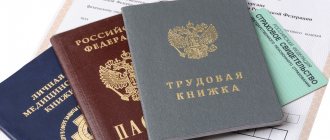Use of a trademark
A license agreement is a legal document under which one party undertakes to transfer the right to use a registered trademark to another party, with or without indicating the limits of the territory of use of the transferred mark. It must be remembered that the party transferring the right to use a trademark under a license agreement is obliged to carry out quality control of the products produced by the party that accepted the right to use the trademark. Current legislation provides for the registration of a license agreement with an exclusive or non-exclusive license for a trademark. An exclusive license agreement gives the licensee (the person receiving the right to use) the exclusive right to use the trademark, while the licensor (the copyright holder of the trademark) does not have the right to enter into licensing agreements with other persons. A non-exclusive license agreement provides for the use of the same trademark by both its copyright holder (licensor) and the party that received the license, and the copyright holder retains the right to issue licenses to other persons. In addition, a distinction is made between partial and full licenses. In the first case, the trademark can be used only for the part of the goods or services specified in the contract. In the second case, the right to use the trademark extends to the entire list of goods and services specified in the contract.
Types of licenses
In accordance with Art. 1236 of the Civil Code of the Russian Federation, there are 2 types of license agreements: exclusive and non-exclusive. They are distinguished by the retention or non-retention of the licensor's right to provide the trademark and trade mark for use by others.
Exceptional
Under an exclusive license, the licensor (owner) transfers to the licensee (recipient) the full scope of rights to use means of individualization and products of intellectual activity, subject to the condition of limiting their transfer to third parties and competitors. This form of agreement is the most beneficial and preferable for the recipient, since he becomes the sole user of the license with the exception of the owner.
Non-exclusive
In agreements with a non-exclusive license, the owner retains the right to enter into similar agreements with other persons. If the exclusivity condition is not reflected in the written agreement, then the license is considered simple (non-exclusive) by default. The use of non-exclusive rights, as well as exclusive ones, is permitted within the limits dictated by the license agreement.
If the scope of rights provides for several types of activities within the framework of one trademark or brand, then it is permissible to conclude a combined agreement providing for 2 types of licenses.
Granting the right to use a trademark
The person in whose name the trademark is registered (the copyright holder) has the exclusive right to use the trademark. The owner of a trademark may dispose of the exclusive right to a trademark. No one has the right to use, without the permission of the copyright holder, designations similar to his trademark in relation to goods for the individualization of which the trademark is registered, or homogeneous goods, if as a result of such use there is a likelihood of confusion. Products, labels, packaging of goods on which a trademark or a designation confusingly similar to it is illegally placed are counterfeit. Thus, a person who illegally uses someone else’s trademark is liable in accordance with current legislation. However, there is still a legal way to use someone else’s trademark. The right holder of a trademark may grant another person the rights to use the trademark within the limits established by the agreement by concluding a license agreement. The conclusion of a license agreement for a trademark does not entail the transfer of the exclusive right to the licensee. A license agreement for a trademark is subject to mandatory registration with the Federal Service for Intellectual Property, Patents and Trademarks “Rospatent”.
A license agreement for a trademark can be of two types:
| 1 | Non-exclusive license |
| Granting the licensee the right to use the result of intellectual activity or a means of individualization, while preserving the licensor’s right to issue licenses to other persons. | |
| 2 | Exclusive license |
| Granting the licensee the right to use the result of intellectual activity or a means of individualization without preserving the licensor’s right to issue licenses to other persons. |
granting the licensee the right to use the result of intellectual activity or a means of individualization without reserving the licensor’s right to issue licenses to other persons.
In order to register a license agreement, the following information is required:
| 1 |
|
It should be borne in mind that changes made to the license agreement and termination of the license agreement are also subject to mandatory registration with Rospatent.
How rights are transferred under a license
The transfer of the right to use under a license makes it possible to determine the period and territory of temporary ownership of the designation, the range of products allowed for release on the market. Also, the original copyright holder may retain the right to use the trademark, along with the temporary owner. Let us highlight the key rules for completing these transactions:
- the parties to the license agreement will be the licensor and the licensee, and the trademark owner can execute several agreements at the same time;
- so that the rights are transferred to only one user, an exclusive license is issued;
- as in the case of sale and purchase, the parties themselves determine the amount and procedure for payment of remuneration.
A written license agreement is submitted for registration to FIPS after signing by the parties. The law gives counterparties broad powers in determining the terms of the transaction. First of all, the period and territory of temporary validity of rights are determined. The duration of the license cannot exceed the period of legal protection.
The territory of validity of the license may coincide with the borders of the countries within which the certificate is valid, or may be limited to certain regions. The list of products covered by the license is also subject to approval. It cannot exceed the list of product groups according to the ICLG specified in the registration certificate. The specified conditions are of particular importance for the execution of licensing agreements within the framework of a franchising agreement:
- the brand owner can simultaneously transfer several trademarks, or differentiate their use between several temporary owners;
- simultaneously with the transfer of the trademark for use under a license, support will be provided within the framework of a unified advertising policy, provision of equipment and personnel;
- For effective distribution of the franchise, the copyright holder will delimit the territories of the licenses, as well as the range of products.
When determining the terms of payment of remuneration, you can provide for a one-time payment, regular deductions, a percentage of revenue, etc. It must be taken into account that violations of the procedure and terms for payment of remuneration will be grounds for early termination of the license, as well as the application of penalties to the counterparty.
The sublicense condition is subject to separate approval. If such a clause is absent from the document, the temporary owner could use the designation only for his own purposes. When a sublicense clause is included in the agreement, further transfer of rights is permitted without additional permission from the original owner.
If the sale of rights takes place during the validity period of the license, the temporary ownership regime remains on the same terms (unless otherwise specified in the text of the license agreement).
Let's look at how transactions involving the transfer of rights to use a trademark are registered.
Copyright sign on the site
Inform everyone of your copyright >>> Copyright registration >>>
Protecting rights on the Internet. Step one - put the Copyright sign
Copyright Your name (name) 2020 All rights reserved
Why do this?
- Notify everyone who sees your text, photograph, website that this work has an author.
- Claim your exclusive copyright on this intellectual property.
- Have the opportunity to set your own rules for commercial and non-commercial use of your product.
The Copyright sign (from English Copyright - “right to copy”) is a symbol of copyright, a special format for notifying your copyright for any work where you put the © mark, as well as your name or the name of the copyright holder, as well as the year of first publication of the work .
Copyright protection mark Copyright does not need to be registered anywhere. You receive the right to use it as soon as you have created any object that is covered by the concept of copyright: a website, a book, an article, a photograph, a translation, a computer program.
The format of the notice with the Copyright sign was established by the Universal (Geneva) Copyright Convention in 1952.
The Copyright icon is a kind of copyright symbol and a warning to everyone: the work has an owner, commercial use without the permission of the author or copyright owner is prohibited!
The Copyright © symbol is important when you need protection against copying and illegal distribution of your copyrighted work.
We recommend placing a copyright symbol on the website, at the bottom of the page. If copyright protection is required in blogs or forums, then after each entry in an abbreviated format, the name of the author (or pseudonym).
Keep in mind that Copyright conditionally protects the work of the author, but not the principle, idea, concept, method, procedure, process. That is, a particular poem may have copyright protection, but copyright does not extend to the genre of lyrics, ideas or concepts.
Works protected by copyright can be used to quote media reports, scientific research, teaching, commentary and criticism, but with obligatory reference to the source and the use of no more than a few paragraphs of the author's text.
To type the Copyright sign on a computer, you need to press and hold the “Alt” 0169 on the numeric pad on the right (you won’t be able to type the © sign on the upper keys). On laptops, this keyboard is “imprinted” on the right in the general arrangement of keys.
Try to always put a copyright symbol on all your works. However, don't stop there.
Put copyright on the site!
Report your copyright >>> Intellectual property registration >>> Copyright registration >>>
A copyright symbol is not yet legal protection of copyright:
Step two
Registration of rights to the name - the name of the site. Trademark registration
Step three
Copyright registration for content, texts and images
Articles and news on the topic:
12/24/2018 Google is unhappy with the new EU requirements for the protection of content on the Internet
Google representatives have publicly stated that they have an extremely negative attitude towards the latest innovations in the European Union regarding royalty fees >>>
08/22/2018 How the UAE fights copyright infringers on the Internet
The department received a large number of complaints from content copyright holders and department employees decided to fix the problem >>>
06/13/2018 Intellectual property rights defenders intend to fight for Internet freedom in Europe
Representatives of the European Union gathered to fight so-called Internet memes, and experts are against >>>
07/05/2013 Copyright holders are ready to close websites under the new anti-piracy law
On August 1, 2013, the Law “On Amendments to Certain Legislative Acts of the Russian Federation on the Protection of Intellectual Rights in Information and Telecommunication Networks”* (Anti-Piracy Law) will come into force, which threatens serious disruptions in the work of the largest social networks, torrent trackers and other popular sites. In fact, this means that the most visited resources will be forced to block access to pages with works or information about them within a few days after notification of the copyright holder, or prepare to close the entire site >>>
03/11/2012 Content and copyright protected by anti-torrent program
The Russian innovation park Skolkovo has developed a new system to combat illegal downloading of copyrighted files from the Internet >>>
01/25/2012 Copyright and public domain in the USA
The Public Domain Amendment to the Copyright Act is consistent with the US Constitution >>>
11/23/2011 The Ministry of Culture is ready to protect copyright on the Internet
The Ministry of Culture of the Russian Federation sent proposals to the Government assigning to the Ministry the right and obligation to record copyright violations on the Internet >>>
10.26.2011 How an Internet user can avoid violating intellectual property
The Russian branch of Google Corporation initiated a discussion with the participation of leading domestic players in the IT market and copyright holders “User Internet: how not to break the law” >>>
10/12/2011 Germany approves of the French experience in protecting copyright on the Internet
The “three strikes” system for copyright infringement in France works very successfully and efficiently >>>
10/06/2011 Copyright and piracy on the Internet
The current situation with compliance with intellectual property legislation is certainly far from ideal. In what direction has this topic moved recently - in the materials of the round table held as part of the International Book Fair >>>
[ 1
]
Advantages and disadvantages
Advantages:
- reduced risks of non-recoupment of investments;
- possible lack of entrepreneurial experience;
- possibility of consultation and support;
- work under a well-known brand and trademark;
- strict legislative regulation;
- stimulating demand for licensed products;
- development of a new market and niche;
- reduced competition under an exclusive license.
Flaws:
- it is possible to create competition with a non-exclusive license;
- loss of part of the profit in favor of the licensor's remuneration;
- distortion of production technology and operational processes;
- dependence on the licensor, restriction of activities.
Thus, by mutual agreement, the parties can draw up a written agreement on the transfer of rights to use a trademark or trademark in a certain territory. The contract must contain essential as well as additional conditions that govern the interaction of the parties. In the future, it must be registered with Rospatent.










